Janamejaya Channegowda
A Deep Learning Approach Towards Generating High-fidelity Diverse Synthetic Battery Datasets
Apr 09, 2023Abstract:Recent surge in the number of Electric Vehicles have created a need to develop inexpensive energy-dense Battery Storage Systems. Many countries across the planet have put in place concrete measures to reduce and subsequently limit the number of vehicles powered by fossil fuels. Lithium-ion based batteries are presently dominating the electric automotive sector. Energy research efforts are also focussed on accurate computation of State-of-Charge of such batteries to provide reliable vehicle range estimates. Although such estimation algorithms provide precise estimates, all such techniques available in literature presume availability of superior quality battery datasets. In reality, gaining access to proprietary battery usage datasets is very tough for battery scientists. Moreover, open access datasets lack the diverse battery charge/discharge patterns needed to build generalized models. Curating battery measurement data is time consuming and needs expensive equipment. To surmount such limited data scenarios, we introduce few Deep Learning-based methods to synthesize high-fidelity battery datasets, these augmented synthetic datasets will help battery researchers build better estimation models in the presence of limited data. We have released the code and dataset used in the present approach to generate synthetic data. The battery data augmentation techniques introduced here will alleviate limited battery dataset challenges.
GAETS: A Graph Autoencoder Time Series Approach Towards Battery Parameter Estimation
Nov 17, 2021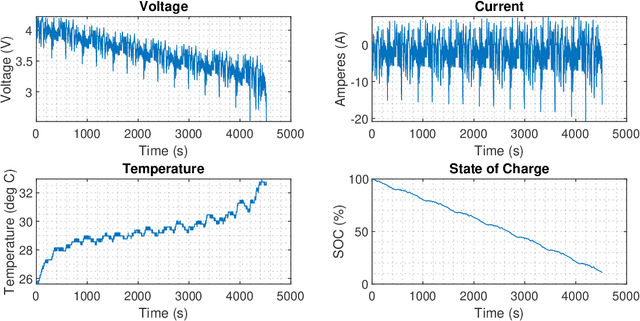
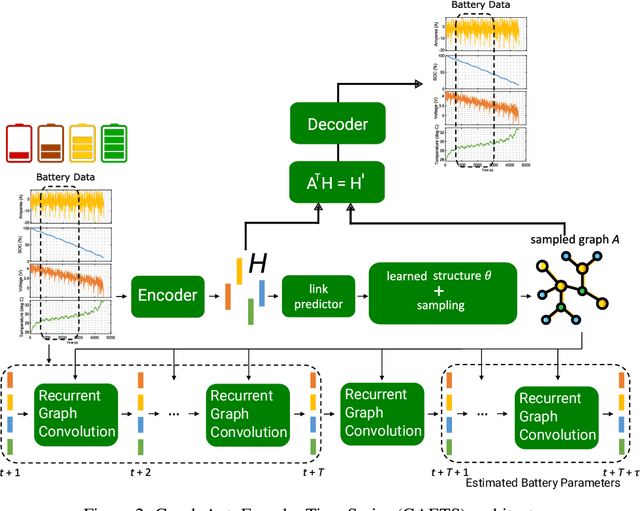
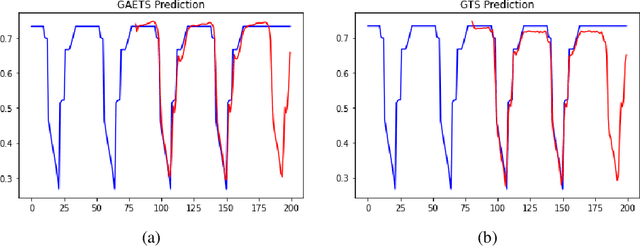
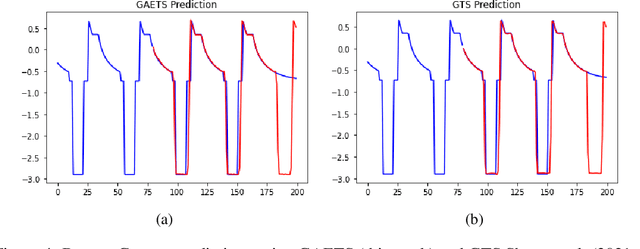
Abstract:Lithium-ion batteries are powering the ongoing transportation electrification revolution. Lithium-ion batteries possess higher energy density and favourable electrochemical properties which make it a preferable energy source for electric vehicles. Precise estimation of battery parameters (Charge capacity, voltage etc) is vital to estimate the available range in an electric vehicle. Graph-based estimation techniques enable us to understand the variable dependencies underpinning them to improve estimates. In this paper we employ Graph Neural Networks for battery parameter estimation, we introduce a unique graph autoencoder time series estimation approach. Variables in battery measurements are known to have an underlying relationship with each other in a certain correlation within variables of interest. We use graph autoencoder based on a non-linear version of NOTEARS as this allowed us to perform gradient-descent in learning the structure (instead of treating it as a combinatorial optimisation problem). The proposed architecture outperforms the state-of-the-art Graph Time Series (GTS) architecture for battery parameter estimation. We call our method GAETS (Graph AutoEncoder Time Series).
An Accurate Smartphone Battery Parameter Calibration Using Unscented Kalman Filter
Oct 06, 2021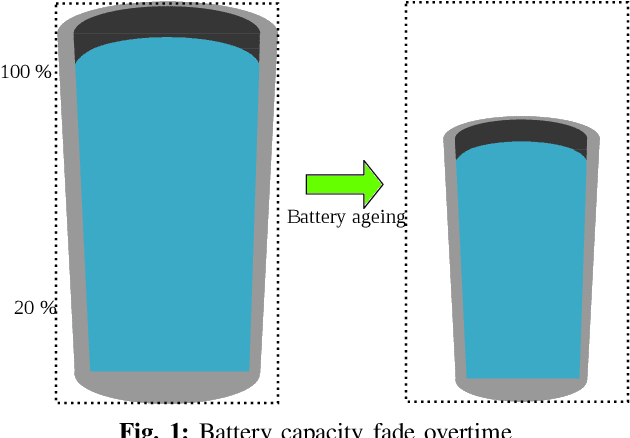
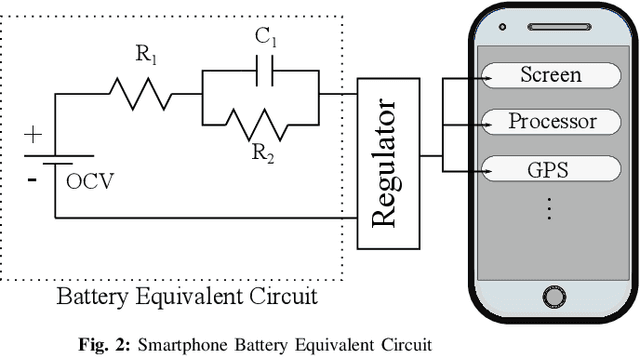
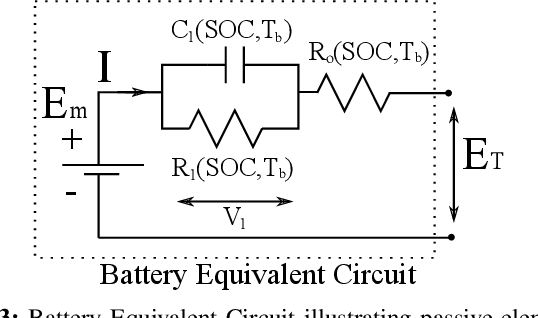
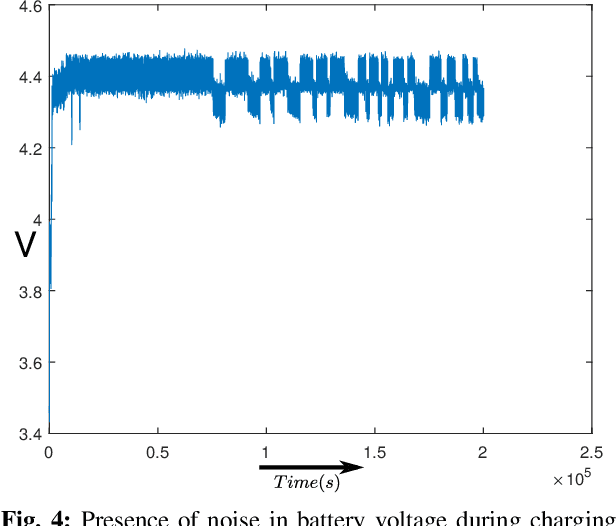
Abstract:Internet of Things (IoT) applications have opened up numerous possibilities to improve our lives. Most of the remote devices, part of the IoT network, such as smartphones, data loggers and wireless sensors are battery powered. It is vital to collect battery measurement data (Voltage or State-of-Charge (SOC)) from these remote devices. Presence of noise in these measurements restricts effective utilization of this dataset. This paper presents the application of Unscented Kalman Filter (UKF) to mitigate measurement noise in smartphone dataset. The simplicity of this technique makes it a constructive approach for noise removal. The datasets obtained after noise removal could be used to improve data-driven time series forecasting models which aid to accurately estimate critical battery parameters such as SOC. UKF was tested on noisy charge and discharge dataset of a smartphone. An overall Mean Squared Error (MSE) of 0.0017 and 0.0010 was obtained for Voltage charge and discharge measurements. MSE for SOC charge and discharge data measurements were 0.0018 and 0.0010 respectively.
Single Stage PFC Flyback AC-DC Converter Design
Dec 23, 2020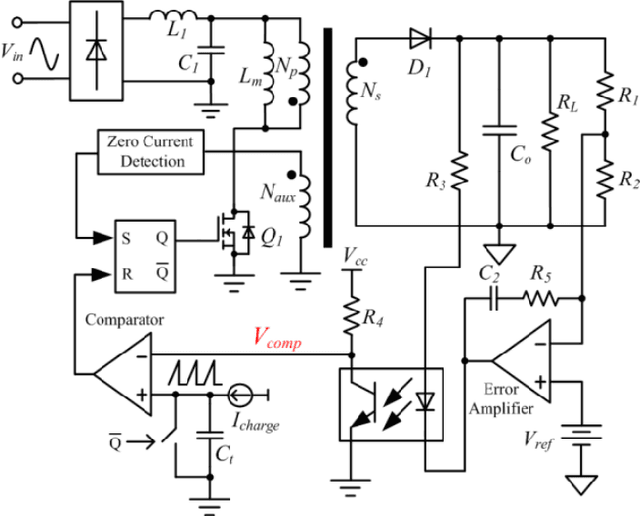
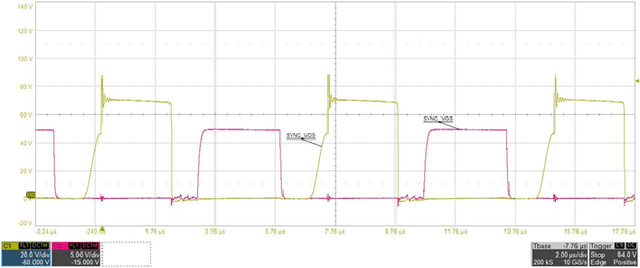
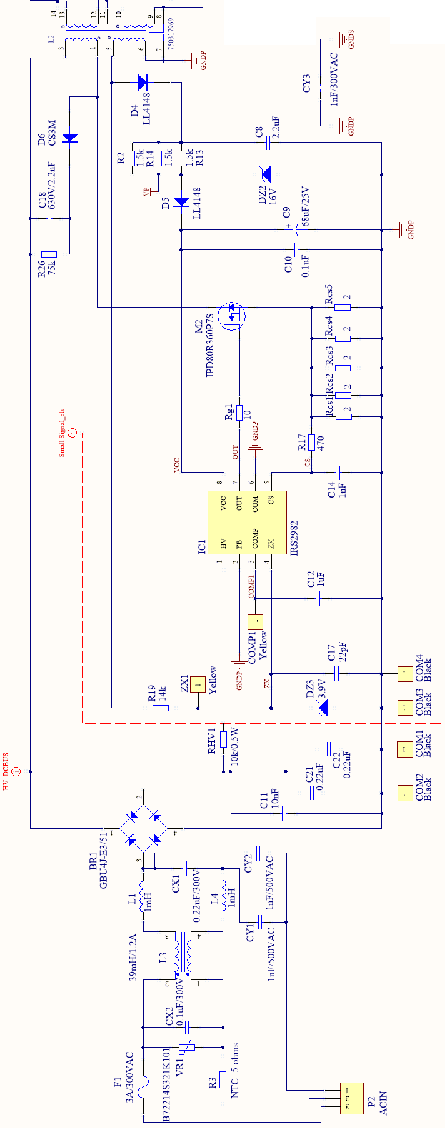
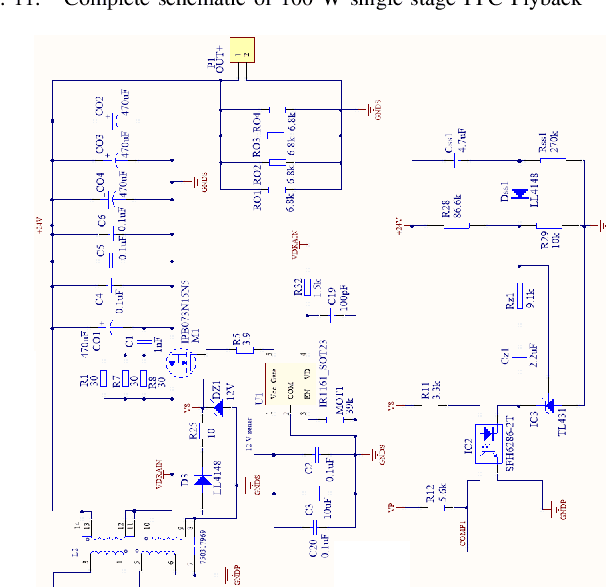
Abstract:This paper discusses a 100 W single stage Power Factor Correction (PFC) flyback converter operating in boundary mode constant ON time methodology using a synchronous MOS-FET rectifier on the secondary side to achieve higher efficiency. Unlike conventional designs which use two stage approach such as PFC plus a LLC resonant stage or a two stage PFC plus flyback, the proposed design integrates the PFC and constant voltage regulation in a single stage without compromising the efficiency of the converter. The proposed design is advantageous as it has a lower component count. A design of 100 W flyback operating from universal input AC line voltage is demonstrated in this paper. The experimental results show that the power factor (PF) is greater than 0.92 and total harmonic distortion (iTHD) is less than 20% for a load varying from 25 % to 100 %. The experimental results show the advantages of a single stage design.
Analysis of NARXNN for State of Charge Estimation for Li-ion Batteries on various Drive Cycles
Dec 19, 2020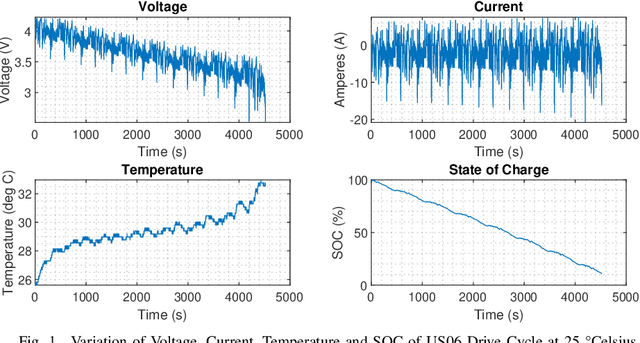
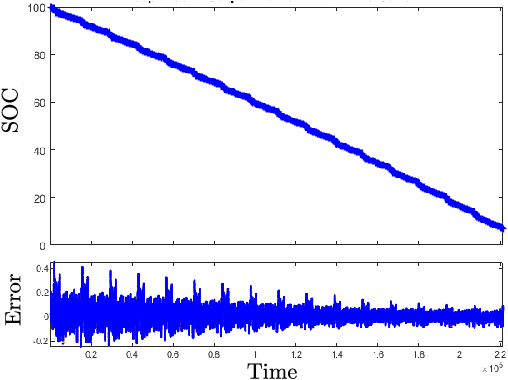
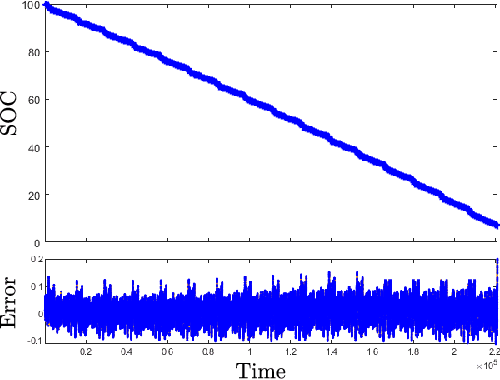
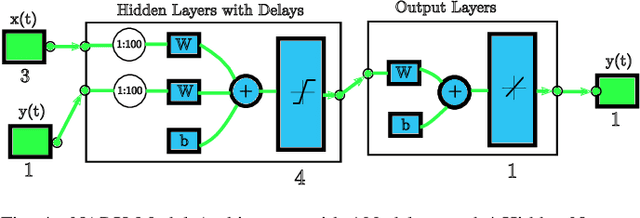
Abstract:Electric Vehicles (EVs) are rapidly increasing in popularity as they are environment friendly. Lithium Ion batteries are at the heart of EV technology and contribute to most of the weight and cost of an EV. State of Charge (SOC) is a very important metric which helps to predict the range of an EV. There is a need to accurately estimate available battery capacity in a battery pack such that the available range in a vehicle can be determined. There are various techniques available to estimate SOC. In this paper, a data driven approach is selected and a Nonlinear Autoregressive Network with Exogenous Inputs Neural Network (NARXNN) is explored to accurately estimate SOC. NARXNN has been shown to be superior to conventional Machine Learning techniques available in the literature. The NARXNN model is developed and tested on various EV Drive Cycles like LA92, US06, UDDS and HWFET to test its performance on real world scenarios. The model is shown to outperform conventional statistical machine learning methods and achieve a Mean Squared Error (MSE) in the 1e-5 range.
A Temporal Convolution Network Approach to State-of-Charge Estimation in Li-ion Batteries
Nov 19, 2020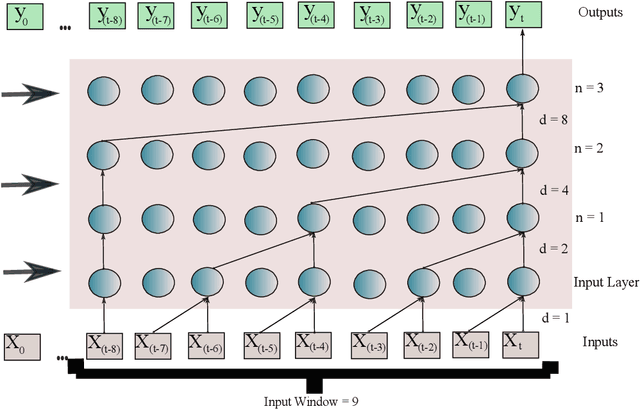

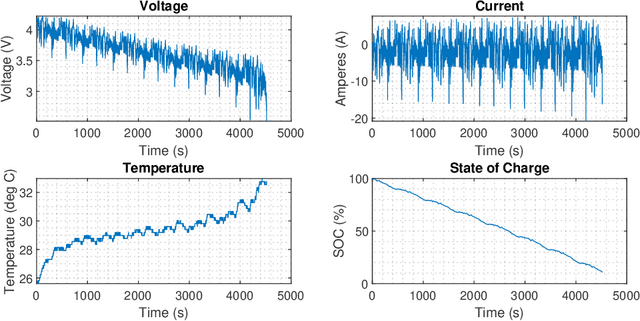
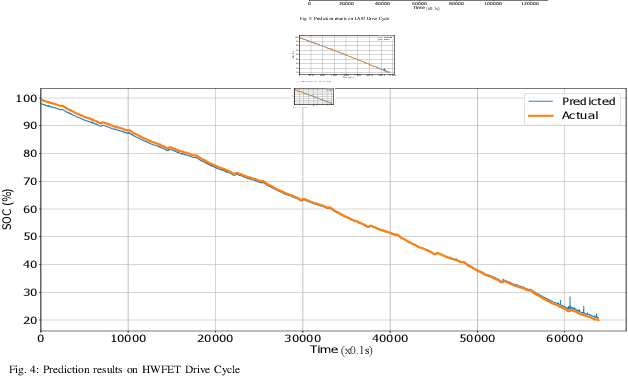
Abstract:Electric Vehicle (EV) fleets have dramatically expanded over the past several years. There has been significant increase in interest to electrify all modes of transportation. EVs are primarily powered by Energy Storage Systems such as Lithium-ion Battery packs. Total battery pack capacity translates to the available range in an EV. State of Charge (SOC) is the ratio of available battery capacity to total capacity and is expressed in percentages. It is crucial to accurately estimate SOC to determine the available range in an EV while it is in use. In this paper, a Temporal Convolution Network (TCN) approach is taken to estimate SOC. This is the first implementation of TCNs for the SOC estimation task. Estimation is carried out on various drive cycles such as HWFET, LA92, UDDS and US06 drive cycles at 1 C and 25 {\deg}Celsius. It was found that TCN architecture achieved an accuracy of 99.1%.
Quasar Detection using Linear Support Vector Machine with Learning From Mistakes Methodology
Oct 02, 2020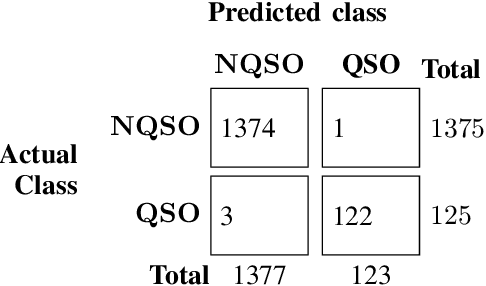
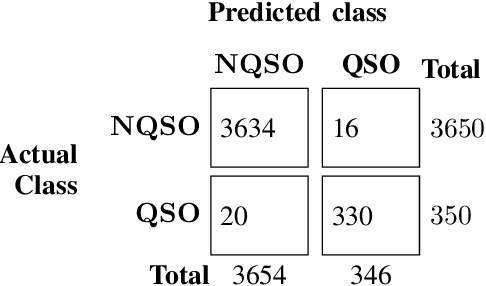
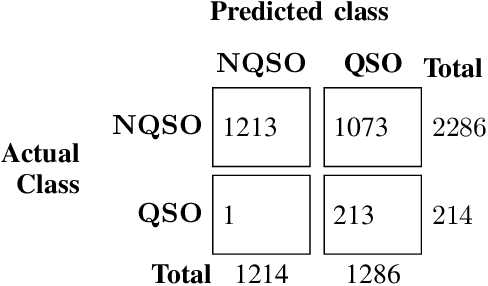

Abstract:The field of Astronomy requires the collection and assimilation of vast volumes of data. The data handling and processing problem has become severe as the sheer volume of data produced by scientific instruments each night grows exponentially. This problem becomes extensive for conventional methods of processing the data, which was mostly manual, but is the perfect setting for the use of Machine Learning approaches. While building classifiers for Astronomy, the cost of losing a rare object like supernovae or quasars to detection losses is far more severe than having many false positives, given the rarity and scientific value of these objects. In this paper, a Linear Support Vector Machine (LSVM) is explored to detect Quasars, which are extremely bright objects in which a supermassive black hole is surrounded by a luminous accretion disk. In Astronomy, it is vital to correctly identify quasars, as they are very rare in nature. Their rarity creates a class-imbalance problem that needs to be taken into consideration. The class-imbalance problem and high cost of misclassification are taken into account while designing the classifier. To achieve this detection, a novel classifier is explored, and its performance is evaluated. It was observed that LSVM along with Ensemble Bagged Trees (EBT) achieved a 10x reduction in the False Negative Rate, using the Learning from Mistakes methodology.
 Add to Chrome
Add to Chrome Add to Firefox
Add to Firefox Add to Edge
Add to Edge